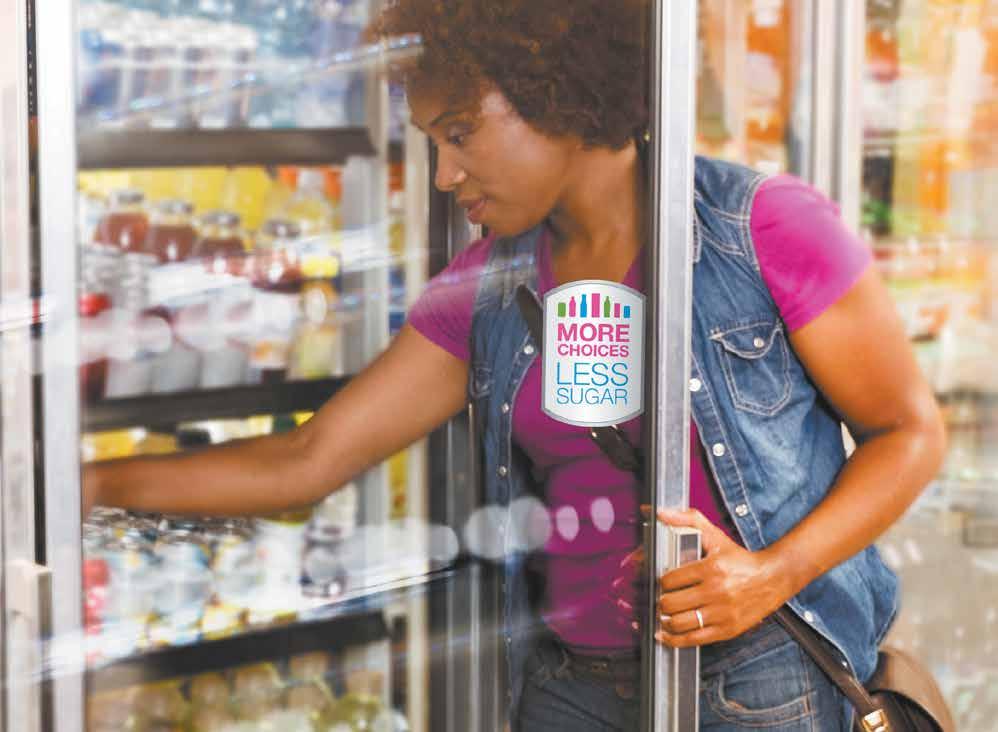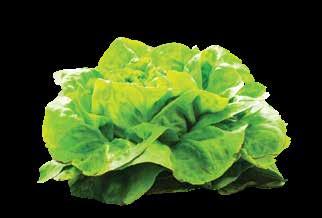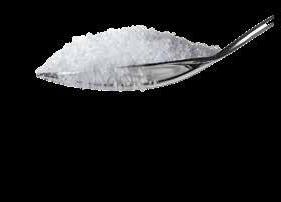
10 minute read
Nutritional Facts to Help Empower Your Health
Spring is upon us, as with warmer weather comes everyone going outside the house and into restaurants, ripping and running from work to events, and fitting in just enough sleep along the way. Sure, life is a thrill, and it can be far less fun spending hours in our kitchen preparing and cooking our own balanced meals, while jumping in bed at appropriate times that will provide us the rest that we need. But without proper nutrition and wellness practices, are we really living or just struggling to catch up with the experiences that a healthier, rejuvenated version of ourselves could have?
Let’s take a look at some common and uncommonly known nutrition and wellness tips with expert advice straight from the desk of nutritionist, Charmaine Jones, MS, RDN, LDN, and Founder and Owner of Food Jonezi.
Fruits, Vegetables, and omega 3’S
DID YOU KNOW that a diet full of nutrient-rich foods like fruits and vegetables, along with omega-3 fatty acid rich foods help stabilize your mood, creating fewer mood swings and an improved ability to focus? Likewise, natural, unprocessed foods largely help to prevent symptoms of depression.
DID YOU KNOW that not all organic food is nutritionally better than conventionally grown foods?
What Is Organic?: The USDA Organic label on various foods choices whether produce, meats, etc., indicates that the food item has grown or been handled without using genetically modified organisms, which the organic standards expressly prohibit. USDA standards vary based on the food type. When we see the USDA, or certified organic seal on a food item, that indicates that the product is at least seventy-percent natural.
Nutritionist Perspective (CJ) - “The Dirty Dozen”: Nutritionally, organic and conventionally grown foods are no different nutrient-wise. However, the process is different. There is a very helpful list created by the Environmental Working Group (EWG) which provides the twelve foods that should be purchased organic due to the amount of synthetic pesticides used to grow the fruits and vegetables.
The “Dirty Dozen” of fruits and vegetables that are best to purchase in it’s organic form based on the EWG’s 2023 Shopper’s Guide to Pesticides in Pro duce, are; Strawberries, Spinach, Kale/Collard/Mustard Greens, Nectarines, Apples, Grapes, Bell Peppers/Hot Peppers, Cherries, Peaches, Pears, Blueber ries, and fresh Green Beans.

Sugar Intake
DID YOU KNOW that sugary drinks are the most fattening products in our modern diet? A high intake of sugar, whether in our drinks, or food sources, often causes a slew of health issues within the body that become harder to reverse later.
Nutritionist’s Insight (CJ): tion. Not only that, but when your body is taking excess sugar, it causes a signif icant amount of weight gain. What people don’t realize is that weight gain is so critical in this [circumstance], because when someone gains weight, those fat cells release a toxin in the body. That toxin causes inflammation. That’s why weight gain becomes a huge factor in all of this. If you drink a lot of sugary drinks, it definitely causes weight gain, it definitely leads to these toxins being released in your body, it leads to inflammation, it decreases your immune system, it leads to cardiovascular disease, it causes insulin resistance which leads to diabetes, high blood pressure which they call the silent killer, it clogs the arteries, [and more].”
Quick Tip: With every meal or snack, add some proteins. Even if you are only eating grapes or a type of fruit, it can spike up your blood sugar, and quickly drop it whether it is from natural or added sugar, consequently leaving you unsatisfied. The American Heart Association recommends just nine teaspoons of added sugar a day, and just six spoons for women and children. However, the average American intakes 17 teaspoons of sugar or more. Stay alert to your sugar intake! n
Nutritionist Perspective (CJ): Fruits and vegetables and omega 3’s are powerhouses and good resources for overall health, and important to increasing your mood and brainpower, specifically omega 3’s.
Omega 3’s have a great ability to increase your overall blood flow to your brain which improves learning abilities, memory, and overall cognitive function. omega 3 coupled with fruits and especially green leafy vegetables, are great for improving brain function. Omega 3’s help prevent proteins called beta-amyloids, that as you age build up, and clump in our brains that often cause Alzheimer’s disease.
“Green leafy vitamins, for example, are rich in Vitamin K, lutein, and beta carotene for example, all help increase our mood, and blow flow throughout our bodies, especially Vitamin K. When you are first born you get a shot of Vitamin K which helps make the blood flow through your body consistently, and fluently. So when your blood flows properly throughout your body, especially to your brain, it definitely gives your body that boost.”

Best Foods For Omega 3 Intake: Omega 3 fatty acids are best retained within our diets, primarily through eating fatty fish including sardines and anchovies, but also higher quality fish including salmon, swordfish, or tuna. Additionally, green leafy vegetables, and fruits like berries are awesome for the bloodstream and brain functioning.
*Stay away from deep-fried, and fried foods, as it adds an extra layer of unnecessary fat which can be detrimental to your heart health. n
Intermittent Fasting
DID YOU KNOW Intermittent fasting is a great method to accomplish weight loss, improve heart health, improve brain health, lower the risk of type II diabetes, and reduce the risk of cancer?
What is Intermittent Fasting?: Intermittent fasting is a dietary schedule or routine largely dedicated around when you eat food, rather than what you eat. That means, you will eat during a specific period or time frame during the day, and neglect to eat during the remaining hours until your eating window returns.
What Are The Benefits?:
After hours without food, the body tends to exhaust a sugar reserve and consequently, begins burning off fat. During that period, some benefits of fasting are;

1. Improves the digestive functions: During the period where you are not eating, your digestive system is given a rest, taking time to repair and rebuild.
2. Improves memory and thinking, Like a form of detoxing - It allows the digestive system to rest, giving the body a moment to strengthen its cognitive functions.

3. Helps to improve blood pressure - Intermittent fasting helps get your body back on track, as it is great for reducing Type II diabetes. When you are fasting, it is similar to your body flushing a lot, typically allowing the body to use the bathroom more often during the fasting period, as you will tend to eat less calories during this time, and lose weight, which also helps reduce a person’s chance of getting diabetes or high blood pressure.
Breaking Fast: “When you intermittent fast for a certain period, once you break your fast, you have to still maintain eating every three to four hours in well-balanced, small meals. You cannot break your fast and go to Popeyes, or eat every, and anything. It is a very disciplined diet. Intermittent fasting does require a lot of preparation and discipline. You should always have someone who can guide you through [your] fast, because that first moment when you break your fast, is the most critical part of the [process]. You don’t want to break your fast, with some fast food. Break your fast with a broth, or some soup. Remember, your digestive system was at rest for a [certain number] of hours. You just can’t eat something that is high in fat, you have to slowly transition back into eating.” n
America’s beverage companies are offering more choices with less sugar.
From sparkling and flavored waters to zero sugar sports drinks, teas and more — nearly 60% of beverages sold now have zero sugar. It’s all part of our commitment to support Americans in their efforts to find balance. And we’re delivering. Learn more at BalanceUS.org.
“If It Sounds Like a Quack...”
By Matthew Hongoltz-Hetling
c.2023, PublicAffairs
$29.00 / 336 pages
Everything hurts. Your joints, your bones, your skin, even your hair hurts. You don’t want to move – which is fine, since you barely can. So what do you reach for? A phone to call the doctor or, as in the new book “If It Sounds Like a Quack...” by Matthew Hongoltz-Hetling, does that idea just make you wanna duck?
If you’ve ever fallen sick, broken a bone, or needed a doctor’s excuse for work, you know that “America’s health care ecosystem is... full of wealth and nonsense...”
Understanding it is impossible. Working your way through it, even more so, and “millions of Americans” don’t even want to try. Instead, they reach for an unproven, alternative “One True Cure” that very rarely works. Doing so, says Hongoltz-Hetling, is a personal prerogative, a freedom, somewhat like consuming sugary drinks, not getting vaccinated, avoiding a seatbelt, and using recreational drugs. Those are things one person does that can ultimately affect the population as a whole.
So is there a solution to a problem when “public health and individual freedom... collide?”
That’s hard to answer. Some alternative medicines have been proven, sort of. Others do nothing, or make an illness worse. Still, big bucks are spent each year on unproven cures, pills, herbs, lasers and caustic cocktails, and the government chafes.
Hongoltz-Hetling found Toby, for instance, a Montana man who sold “herbal concoctions” that he claimed could heal anything, until the FDA said he couldn’t make that claim anymore. Robert in Utah, an ambitious man of God, embraced a debunked 19th-century cure. Alicja, born and raised in Poland, immersed herself in hirudotherapy, or the use of leeches, which challenged the FDA for a label. Dale and Leilani of rural Wisconsin believed that prayer could cure all, until they lost their youngest daughter to ketoacidosis. Larry was certain that lasers stopped disease in its tracks, but the FBI disagreed. The “alien who lived in Jim Humble’s skin” claimed that only ancient, other-worldly medicine was right.
Meanwhile, says Hongoltz-Hetling, millions of Americans aren’t “opting out of health care.... just professional health care.”
Are you uncomfortable yet? Because you should be; author Matthew Hongoltz-Hetling should make you squirm here – but you’re also going to laugh.
For sure, “If It Sounds Like a Quack...” is wry, irreverent, and hilarious, poking equal fun at presidents, patients, and quack practitioners alike, while it makes a big point: faux medicine is relatively harmless, until it’s not and someone gets hurt. And people do, often, but as Hongoltz-Hetling shows, government oversight (or overreach, depending on your viewpoint) is ineffectual and can’t always save people from themselves.
“We can all make fun,” says Hongoltz-Hetling – and he does in these stories that read like a collection of novelettes – but he never loses sight of reality: One True Cures have “serious consequences.”
Before you click on that online ad, before you buy another bottle of herbs or an untested medical method, reach for “If It Sounds Like a Quack” first. Reading it might make you stay safe. It sure can’t hurt. n
“Quit: The Power of Knowing When to Walk Away”
By Annie Duke c.2022, Penguin Portfolio $27.00 /
336 pages
It’s over.
The last page is read, the credits are rolling, your plate is clean, you’ve said your good-byes for tonight, for this weekend, for this month, forever. It’s time to turn your back and walk away – or is it? In “Quit” by Annie Duke, learn when to say alright and when to say adieu.
Quitters never win, quit the process and you’re quitting the result, nobody said it would be easy, blah blah blah. Platitudes aside, you’re done messing with that thing and you’d like to throw in the towel but you’ve invested so much time and quitting is for sissies, blah blah.
We’ve all heard those sayings before but, says Duke, believe it or not, a premature ending can be the best thing that could happen sometimes... but not always. It truly depends.
Knowing when to quit, she says, is an important life skill but it’s not as glamorous as stick-to-it-iveness. People tend to remember those who persevere, no matter the outcome, but they don’t generally remember those who get off the merry-go-round before the music stops. Still, she says, if she was going to teach someone to make better decisions, “quitting is the primary skill” she’d pick.
“Trying something and having the ability to quit is vital to how we all live our lives.”
So how do you know when it’s time to stop the foolishness?
Learn to re-frame your decisions to determine whether it’s better to stay or go; if it’s a close call, the latter’s probably the better option. Remember that public opinion isn’t always right. Quit when you’re ahead if the future looks bleak, and be aware of a nasty phenomena called “loss aversion.” Also watch for “sunk cost,” which can cause you to continue because you think things just have to get better eventually. They won’t.
Set a list of “kill criteria” before embarking on a project. Don’t be too optimistic. And remember that there’ll always be times when the choice to quit is yours, and times when “the world makes the choice for you.”
In the last almost-three years, you’ve probably asked yourself a dozen times why. You don’t need a subject, sometimes “why” is the entire question and “Quit” is the answer.
It’s not an easy one, though. Author Annie Duke breaks the dilemma down in four sections that help readers learn how to make the right decision, and that empower them to take a possibly-unpopular action. These are hefty sections, too, with meaty words for you and for your too-loud, often-wrong inner naysayer.


The lessons imparted are ones we all need to understand fully, but they’re not the only things you’ll find in this book. Duke bolsters her advice with pertinent anecdotes that are entertaining, even if you’re not in need of a coin to flip any time soon.
Read this book for that amusement or, if you need to know how to do the right thing at what looks like the wrong time, read it for instruction. Either way, “Quit” is good, full stop. n
What if my cancer spreads? I can’t recover? I can’t make it to my son’s wedding?

What if you can?
World-leading treatment is closer than you think: right in your community. Where trailblazing teams of cancer specialists and scientists work together to ask “what if”— discovering how cancer grows and new ways to treat it; bringing 50 years of research and expertise at the Johns Hopkins Kimmel Cancer Center closer to your home. So your path forward has fewer questions…and the answers you need.
World-leading cancer care in your community. Sibley Memorial Hospital • Suburban Hospital hopkinscancerdc.org









